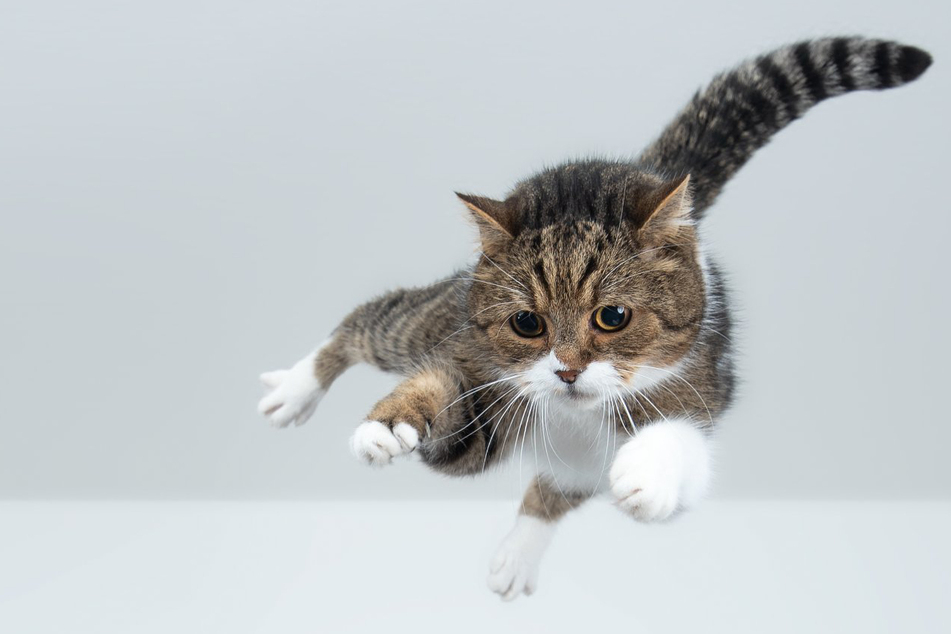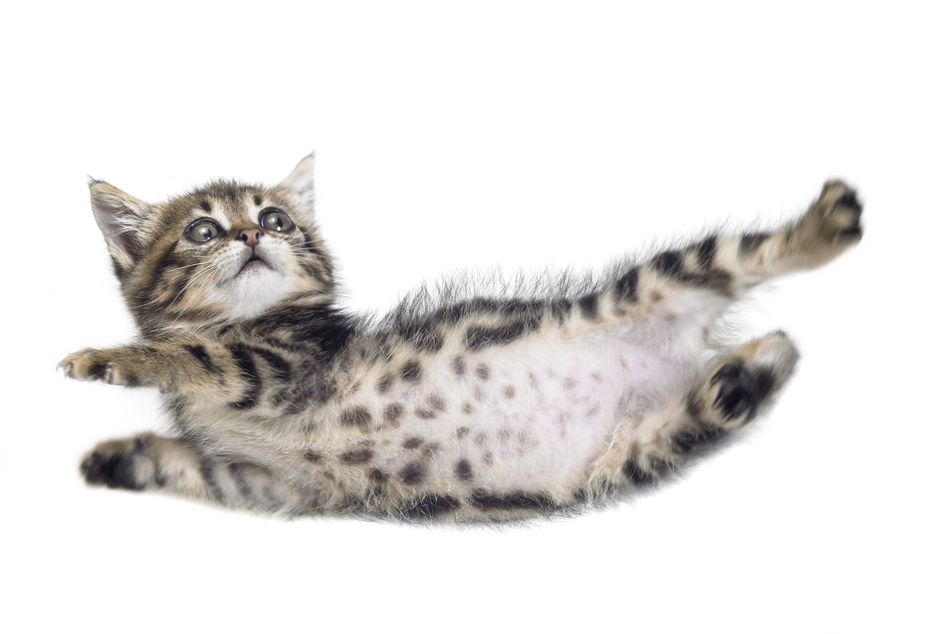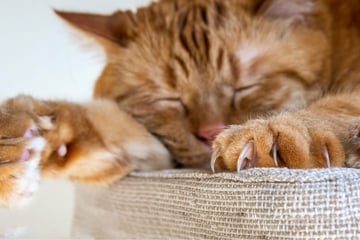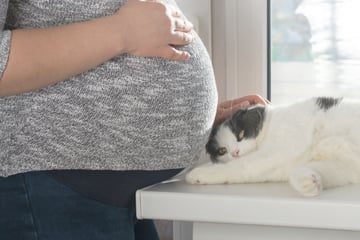Do cats always land on their feet, and why?
Cats might be genius climbers, but that doesn't mean they're perfect. Even if they fall, it's widely believed that cats always land on their paws. Is this even true, and if so, how do they do it?

Everyone knows that cats love to climb. They take their journeys across tree branches, on rooftops, and through closets with barely any trouble in sight.
Sometimes, though, they do make little mistakes and take tiny tumbles. Nevertheless, cats always seem to land on their feet, but is that just a coincidence?
In this cat guide, TAG24 takes you through whether it's true that cats always fall on their feet, and if so, why.
Do cats always land on their feet?
Though the height of the fall changes whether kitties can safely land, their built-in "righting reflex" means that cats instinctively land on their feet. Due to a variety of factors, explained below, a cat will generally land on its paws when dropped or when falling.
Of course, this does rely on there being enough time for the cat to flip over (if dropped upside down). If dropped or falling from too far a height, kitties may be injured or killed regardless whether they land on their feet.
How far can cats fall?
A 1987 study by the New York City Animal Medical Center revealed that cats can actually fall upwards of seven stories without needing emergency medical care. Interestingly, the cats who fell between two and six stories sustained more injuries than many who were dropped from over seven.
The questionable ethics of this study aside, the findings are revealing. Most of the kitties were dropped onto concrete, and one cat that was dropped from 32 stories in the air survived, only needing about two days in hospital.
How do cats land on their feet?
There are many different reasons for a cat's general ability to land on its feet when falling or dropped. Interestingly, cats typically land on all four of their paws at the same time, not just on their front or back. This helps to distribute their weight and absorb the impact.
Of course, physical characteristics and things like health and age have an effect on whether a cat can land uninjured, but the height of their fall is also important, with shorter falls actually often causing worse injuries than higher falls.
While cats can generally fall quite safely, they are not immune to bruises, broken bones, fractures, concussions, and even death.

Cats' reflexes make them land on their feet
Cats have an instinctive "turning" reflex which generally causes them to land upright. This reflex allows them to turn while falling so that all four paws hit the ground at the same time. It's an instinct they develop around the sixth week of their life.
The process itself takes less than a second, as the cat turns its upper body and abdomen into position. Its tail steers and stabilizes the descent. The kitty positions its four legs wide apart so that its body's surface area is increased, reducing the speed of the fall.
Important: Even if your cat seems completely fine, if it has fallen from a window or balcony, you must take it immediately to the veterinarian to check for any injuries that may have been induced.
Cats land on their feet because of organ balance
Within a cat's inner ear, signals allow for a sense of balance that intuitively and reflexively initiates a turning movement. This movement allows the animal to land gracefully and safely.
Cats fall on their feet due to their flexible skeletons
A cat's spine is very stretchable and flexible, able to bend to an almost right-angle. This is due to vertebrae and intervertebral discs that are incredibly pliable. They also have bones, tendons, and ligaments that display a high degree of elasticity, helping them to absorb the impact of a fall.
The spine bends when the cat twists in the air so it can turn onto its front. Before landing, the cat will make sure that all four legs and paws hit the ground at the same time. That flexibility is super important as it absorbs the impact of the fall.

Even if cats fall on their feet, try to avoid kitty collapses
Though cats usually fall on their feet, that doesn't mean they can't hurt themselves when they fall off something. If you want to protect your kitty, it's a good idea to take a few precautions to keep it safe. Your number one priority should be to cat-proof your home.
Here are a few things you can do to protect your cat from falling:
- Keep your floors carpeted and keep them from being hard or uneven
- Make sure to clean up broken glass immediately and thoroughly
- Ensure that your balcony is cat-proof
- Fix your shelves to the wall solidly so they won't tip over
- Try to reduce the slipperiness of your house's surfaces and floors
- Tie up and remove curtains and find alternatives
- Attach the window grills and fly screens
- Avoid easily breakable objects as much as possible
- Use edge or corner protectors on any sharp edges
Cats do, indeed, have an innate "turning" reflex, which means they will usually land on their feet when they fall. That doesn't mean that it is a 100% guarantee, though, so you need to make a cat's environment as safe as possible.
Cover photo: 123RF / Nilsjacobi



